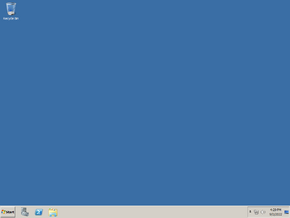Build list legend
Non-existent page
| Version of Microsoft Windows | |
 | |
| OS family | Windows NT |
|---|---|
| Version | 6.1 |
| Codename | Windows Server 7 |
| Architecture | x64, IA-64 |
| Latest build | 6.1.7601.27670 |
| Release date | 2009-10-22 |
| Support end | 2020-01-14 2023-01-10 (with Extended Security Updates) 2024-01-09 (with Extended Security Updates only for Azure customers) 2026-01-13 (Extended Security Updates under Grandfathered Premium Assurance Support) |
| Client counterpart | |
| Windows 7 | |
| Replaces | |
| Windows Server 2008 | |
| Replaced by | |
| Windows Server 2012 | |
Windows Server 2008 R2 is the server counterpart of Windows 7, which reached RTM on 22 July 2009 and was released on 22 October of that year, becoming the first server release to ship day-and-date with the client counterpart since Windows 2000 Server. Like its client counterpart, it is intended to fix many of the issues users perceived with Windows Vista.
Microsoft recommends Windows Server 2008 R2 to be installed on a system with a processor with a speed of at least 1.4 GHz, at least 1 GB of RAM, 32 GB of hard drive space, a DirectX 9-based WDDM display adapter or better display adapter, and a DVD-ROM drive. This release drops support for the x86 architecture, a move which was followed by the consumer-oriented Windows 11 in 2021.
Windows Server 2008 R2 is fully compatible with all 64-bit Intel Xeons prior to 2017 and all AMD Opteron processors. Later processors (1st gen Xeon Scalable, and AMD EPYC) are not supported due to Windows Update being blocked on these processors. There are patches that allows Windows Update to work. In some cases, integrating USB 3.0 drivers into the installation media may be necessary in order to successfully install the operating system on modern machines due to the lack of USB 3.0 support, which was not introduced until Windows Server 2012.
Build 6608 introduced a feature internally known as "drift correction", which resolves issues related to CPU clock circuit timing that could potentially prevent either the operating system or services from starting up correctly. Clock drift/timing issues plague Windows Server 2008 on Xeon E3/E5/E7 v3 processors and newer, as the OS will often fail to successfully boot to the desktop or cause many services to not function as a result of drift.[1]
Build list legend